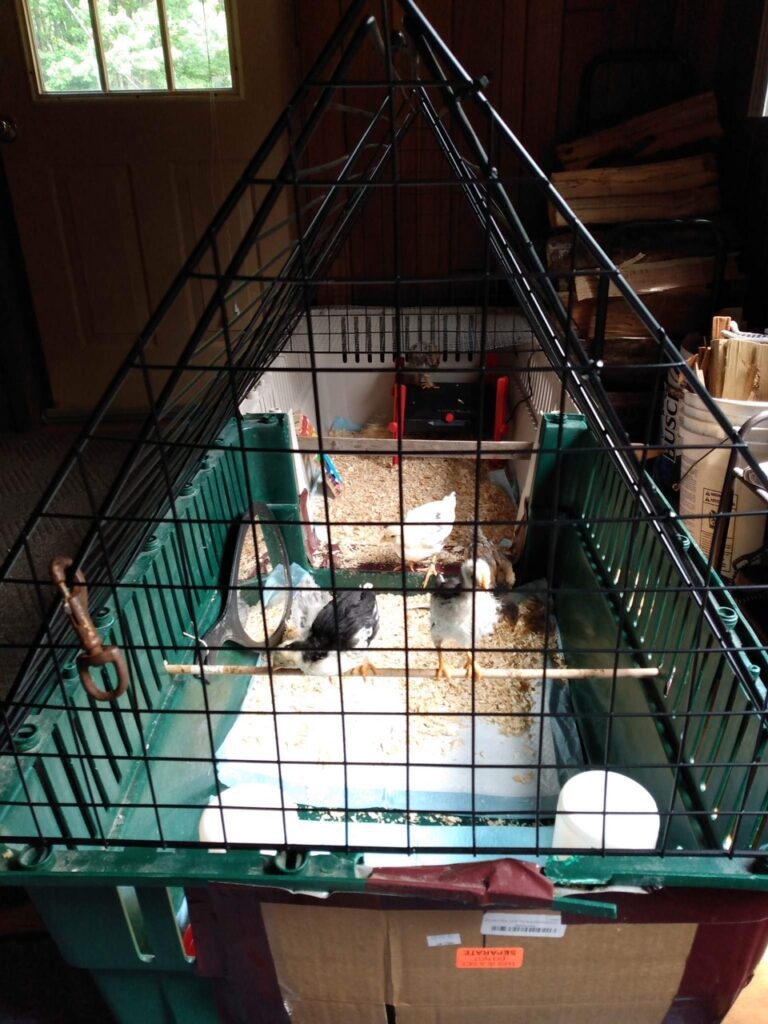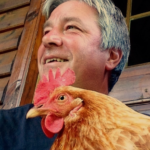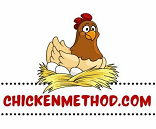Without a doubt, the most critical time in a chicken’s life is the first few days. Cold can get them. A misstep by your loving yet curious canine pal could do them in. Given the opportunity, every carnivorous critter would love to gobble them up.
That is why making their first several weeks safe and warm is so important. Baby chick brooders provide the perfect environment to allow baby chicks the space, freedom from fear of attack, warmth, food, and water they need to make it, or pullet out, to adolescenthood.
Brooders apply to all small fowl, whether chickens, quail, or ducklings. Keeping them all warm and happy in a protected space is critical.
Brooder Basics
Chicks are pretty easy to raise if a few conditions are met. They have to be warm and dry. A heat source is necessary to imitate the heat from a broody hen. An adult chicken’s body temperature can range from 105-107 degrees Fahrenheit, so your heat source must be the same.
If a chick gets too far from the heat, it could get chilled, resulting in devastating consequences. Help a chick out by moving it closer to the heat source if you hear them chirping loudly and continuously.
There are two types of heaters typically used in brooders. The first is a heat lamp, which is just what it sounds like: a simple lamp that puts out heat. The bulb’s wattage is about 250, so it does use a little more electricity than a standard bulb.
The bulb typically has a red coating to lessen the intensity of light emanation, but make no mistake—it puts out light. Some say that the light disturbs the rest that chicks need.

The second type is a heat plate that doesn’t give off light. Mine has two settings: “heater” and “brooder.” The brooder option is rated at 47 watts and is only warm to the touch, so it is much more efficient than the lamp. It uses radiant heat to keep the chicks warm.
Both methods work. The lamp is much less expensive but not as safe or efficient as the plate, which costs around 40-50 dollars. If using a lamp, you must keep it safe from surfaces, especially shavings or wood chips.
Here is my friend’s brooder. You can see how toys, mirrors, roosts, and even a “clean” area can be added to the brooder to create a wonderful play area while supplying a super-safe space for the chicks to thrive. The heater plate is in the back corner. I love the A-frame setup, which allows the chicks to spread their wings. When this homemade structure is no longer needed, it can be folded and stacked in a corner for use again the next time chicks are purchased.
Brooder Types
This list is by no means exhaustive. These brooder types are simply the most common.
Plastic tubs. These can be had at farm stores, super-stores like Walmart, yard sales, etc. 50-gallon tubs work very well as long as there is no danger of predators getting into the top of the tub. A rod or stick can be placed across the top of the tub to hang a heat lamp as long as it is tall enough to keep it from burning anything.
A large cardboard box or plastic tub can be used in the same way. An old window screen or chicken wire can be fashioned into a cover for both containers to keep unwanted visitors out of the brooder. Inexpensive brooders or materials can be found online, saving you the hassle of gathering your own materials.
A foldable puppy pen makes a great brooder. It has many advantages that solid brooders do not. It has excellent visibility, so the chicks can always see the world around them. It has a washable zip-out floor. It’s light, collapsible, easily relocated, and comes in many colors. These can be had for under $100.00.

Box brooders with screened bottoms, sight windows, and sliding trays can be purchased (or made if you’re handy). These are much more expensive, ranging from a couple hundred dollars. They are fantastic if you want to spring for them. Chicks have freedom of movement to get closer or farther from a heat lamp or heating plate. The box brooders typically have a wire floor that allows manure to fall through to a removable collection tray.
Inside Equipment
Along with a heat source, there are a couple of other items that you’ll need for your brooder.
You’ll need a feeder. Open feeders present a problem for baby chicks. If chicks are allowed to spill something, they absolutely will do it. Feeders with slotted tops work best. The chicks can reach the food but can’t get their little feet in the feeder to scratch, which is one of a chicken’s favorite things to do.
…just a note about chick feed. Chicks purchased from a hatchery are often inoculated before shipping. If a chick has been given a vaccine, it should not be given medicated feed as it can counteract the inoculation. On the other hand, if chicks haven’t been inoculated, medicated feed should be provided for a few months.
The same goes for a water jug. Open bowls are quickly filled with shavings or, worse, poop. They can get messy fast. A good alternative is a nipple feeder. They are inexpensive, and they stay clean. You only need to train one chick to use it, and the rest will follow suit.
A nipple waterer is a spring-loaded, pin-activated water dispenser that the chick taps on to get droplets to appear. It must be placed at about eyeball height so they can easily access it.
Bedding
You can give your baby chicks a few choices of bedding. The most popular is course pine shavings. They are absorbent, easy to clean, pathogen-free, common, and pretty cheap-cheap. Sorry…
Shredded newspaper works, but I haven’t tried it because I don’t want to risk the ink being a problem.
Hay or straw can be used, but straw isn’t very absorbent, and hay might quickly rot. It’s possible that unwanted pathogens or other critters could come in with hay or straw.
Cedar shavings are quite aromatic but not recommended for chicks because they might be too much for their respiratory systems.
Some folks just let their chicks walk on bare floors – plastic, wood, screen, or carpet. Plastic is slippery. The screen seems a little harsh. Carpet would have to be disposed of after use – that’s not good for the landfill and makes lousy compost.
My choice is pine shavings.
The Bottom Line
Baby chick brooders serve many purposes combined to achieve one goal – to make it to the point when the chicks are feathered and can hold their own. Maybe that’s two goals. The bottom line is that whatever you use to brood your chicks, you’ll get your birds off to a great start if you keep them safe, warm, fed, and watered. That way, they can grow up to be the pets, layers, or meat birds you want.
Please let me know if I can answer any questions for you.
Thanks for reading, and take good care of yourself.
Dave

Chickenmethod.com

